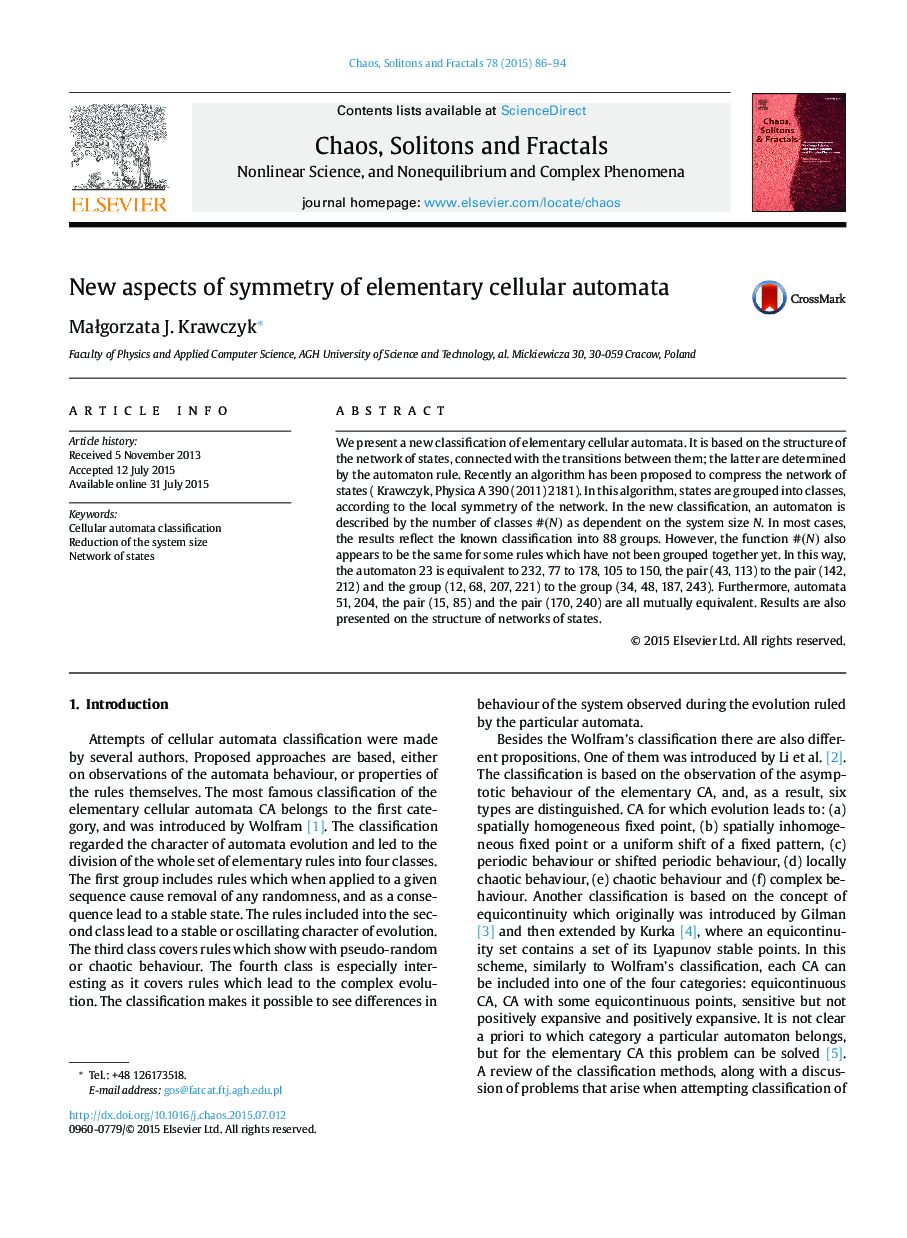| Article ID | Journal | Published Year | Pages | File Type |
|---|---|---|---|---|
| 1888525 | Chaos, Solitons & Fractals | 2015 | 9 Pages |
We present a new classification of elementary cellular automata. It is based on the structure of the network of states, connected with the transitions between them; the latter are determined by the automaton rule. Recently an algorithm has been proposed to compress the network of states ( Krawczyk, Physica A 390 (2011) 2181). In this algorithm, states are grouped into classes, according to the local symmetry of the network. In the new classification, an automaton is described by the number of classes #(N)#(N) as dependent on the system size N . In most cases, the results reflect the known classification into 88 groups. However, the function #(N)#(N) also appears to be the same for some rules which have not been grouped together yet. In this way, the automaton 23 is equivalent to 232, 77 to 178, 105 to 150, the pair (43, 113) to the pair (142, 212) and the group (12, 68, 207, 221) to the group (34, 48, 187, 243). Furthermore, automata 51, 204, the pair (15, 85) and the pair (170, 240) are all mutually equivalent. Results are also presented on the structure of networks of states.
